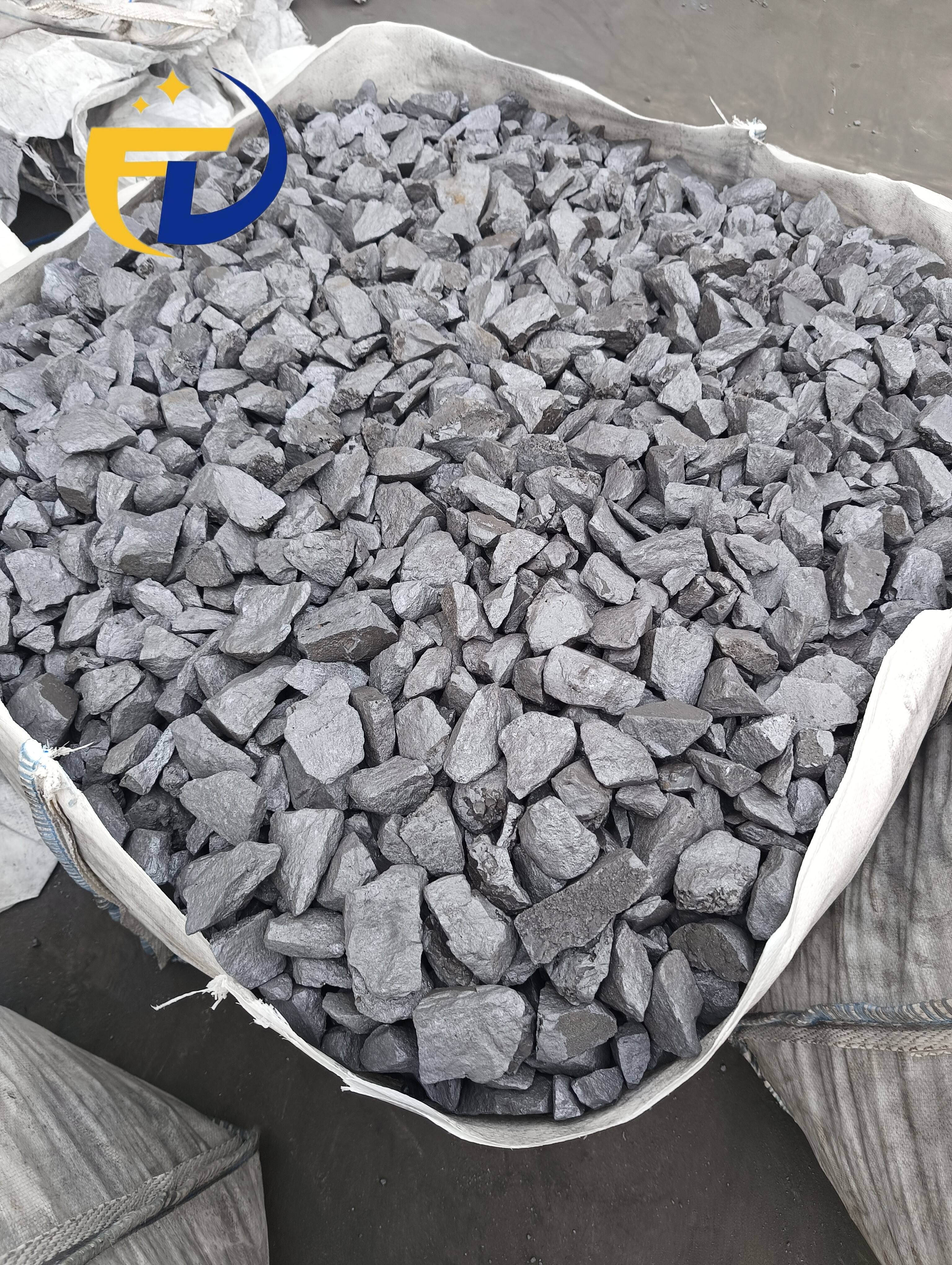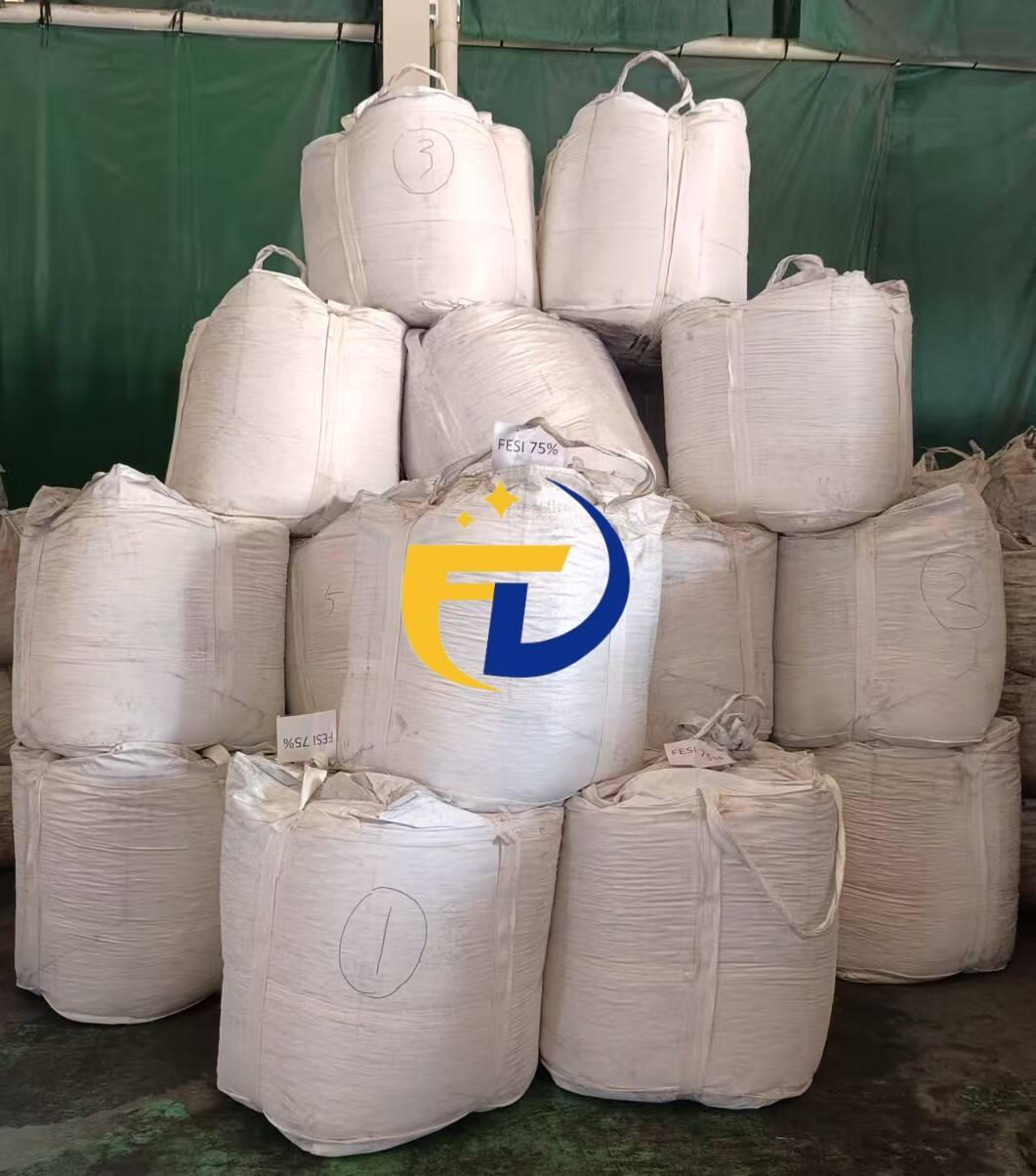How Ferrosilicon is Produced and Its Common Specifications
Ferrosilicon (FeSi) is a widely used ferroalloy, primarily employed as a deoxidizer and alloying agent in the steel industry. Its production is an energy-intensive process that relies on the reduction of silica in a submerged arc furnace.
Production Process of Ferrosilicon
The manufacturing of ferrosilicon primarily utilizes a submerged arc reduction furnace (often called a "submerged arc furnace" or "electric arc furnace") . The process can be divided into several key stages:
Raw Material Preparation: The main raw materials are:
· Silica (SiO₂): Typically requires a purity of over 97% .
· Carbonaceous Reductants: Such as metallurgical coke, petroleum coke, or charcoal.
· Iron Sources: Usually steel chips/scrap or iron ore to provide the iron component and control the silicon content in the final alloy . These raw materials undergo processes like crushing, screening, and drying to achieve the appropriate particle size and moisture content for smooth furnace operation .
Furnace Smelting: The blended raw materials are continuously fed into a submerged arc furnace. At the high temperatures (above 1800°C ) generated by the electric arcs between the electrodes and the charge, silicon dioxide in the silica is reduced by carbon to form silicon, which then alloys with iron to produce ferrosilicon melt .
· Maintaining stable electrode insertion depth and monitoring furnace conditions (temperature, pressure) are crucial for efficient operation .
· The tapping cycle is typically every 2 to 4 hours .
Refining (For High-Purity or Special Grades): To produce low-carbon, low-aluminum, or other high-purity ferrosilicon grades, external refining is necessary. Common methods include:
· Using argon blowing and stirring technology to promote full contact between the alloy melt and refining agents (like composite decarburizers and refined slag), facilitating the removal of impurities such as carbon and aluminum .
· Oxygen refining or slag washing methods can also be employed .
Casting and Crushing: The molten ferrosilicon tapped from the furnace is cast into molds. After cooling and solidification, it is crushed, graded (according to customer requirements for particle size distribution, e.g., 10-100mm blocks for steelmaking, 0.2-8mm powder for casting ), and packaged for shipment.
Common Specifications and Models of Ferrosilicon
Ferrosilicon is primarily classified based on its silicon (Si) content and the content of impurities such as aluminum (Al), carbon (C), phosphorus (P), and sulfur (S). Common models include:
Grade / Model Si Content (%) Common Impurity Limits (Max %) Primary Applications & Notes
FeSi75 72-80 Al: 1.5-3.0, C: 0.2-0.5, P: ≤0.04, S: ≤0.02 Most common grade, widely used for steelmaking deoxidation and alloying.
FeSi72 72-75 Al: 1.5-3.0, C: 0.2-0.5, P: ≤0.04, S: ≤0.02 Standard grade for steelmaking.
Low-Carbon FeSi (e.g., B-LcFeSi) ~75 C: Very low (e.g., ≤0.02), Al, P, S controlled Used for deoxidizing high-grade steel varieties like electrical steel.
45% Si FeSi 40-47 Al, C, P, S controlled Used in cast iron foundries as an inoculant.
· Particle Size: Depending on the application, ferrosilicon is supplied in various sizes, such as standard lump (10-100mm), refined lump (10-50mm), or powder/fines (0-8mm) . The proportion of fines is often strictly controlled (e.g., <5% below 10mm) .
Ferrosilicon is crucial in:
· Steelmaking: Serves as a deoxidizer (removing oxygen from molten steel) and an alloying element (imparting specific properties like increased strength and corrosion resistance to steel).
· Foundry Industry: Used as an inoculant in cast iron production to promote the formation of spherical graphite, improving the strength and quality of cast iron.
In summary, ferrosilicon production is a complex process combining high-temperature metallurgy and precise control. Different grades and specifications meet the diverse needs of various downstream industries, making it an indispensable important material in modern industry.




